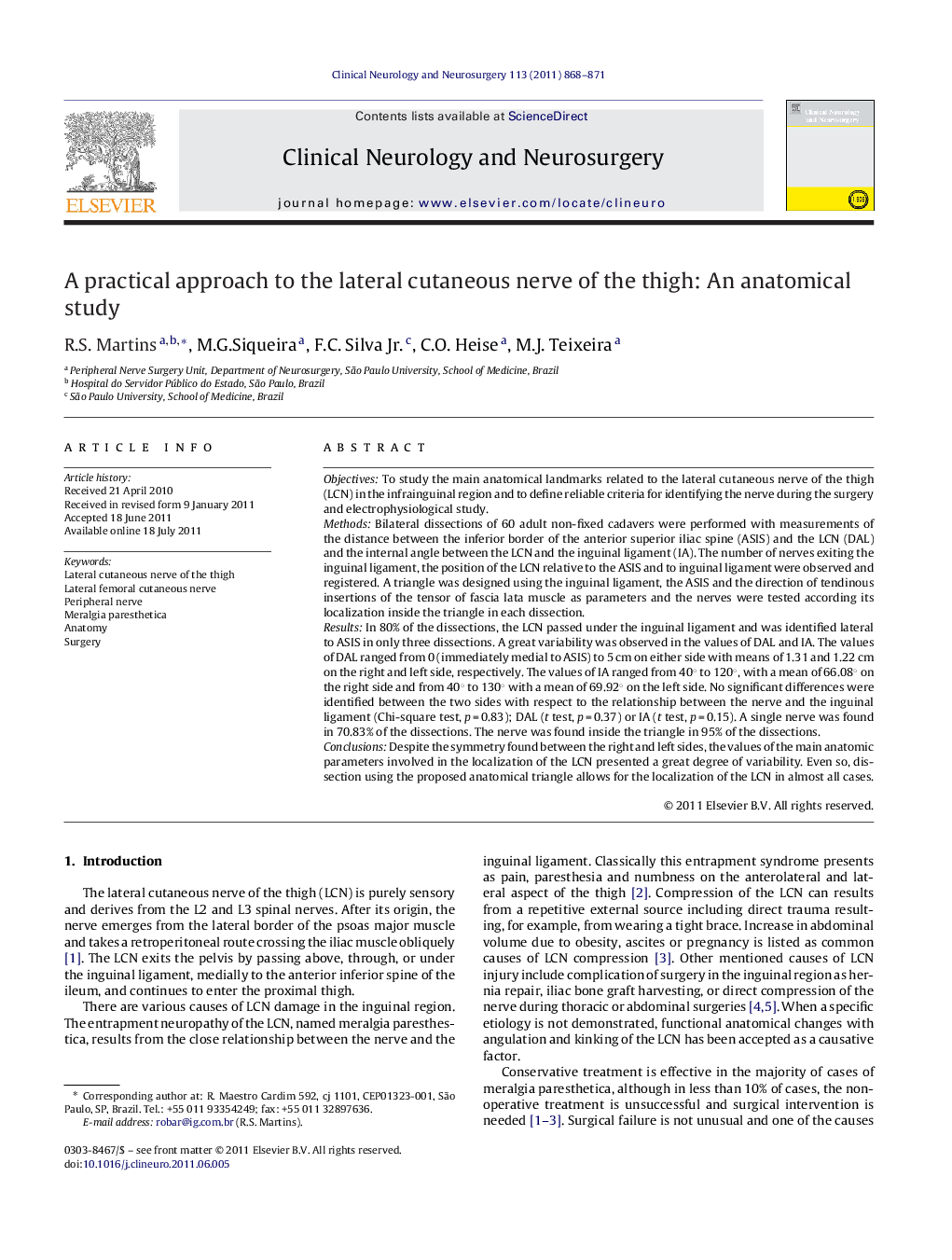| Article ID | Journal | Published Year | Pages | File Type |
|---|---|---|---|---|
| 3041080 | Clinical Neurology and Neurosurgery | 2011 | 4 Pages |
ObjectivesTo study the main anatomical landmarks related to the lateral cutaneous nerve of the thigh (LCN) in the infrainguinal region and to define reliable criteria for identifying the nerve during the surgery and electrophysiological study.MethodsBilateral dissections of 60 adult non-fixed cadavers were performed with measurements of the distance between the inferior border of the anterior superior iliac spine (ASIS) and the LCN (DAL) and the internal angle between the LCN and the inguinal ligament (IA). The number of nerves exiting the inguinal ligament, the position of the LCN relative to the ASIS and to inguinal ligament were observed and registered. A triangle was designed using the inguinal ligament, the ASIS and the direction of tendinous insertions of the tensor of fascia lata muscle as parameters and the nerves were tested according its localization inside the triangle in each dissection.ResultsIn 80% of the dissections, the LCN passed under the inguinal ligament and was identified lateral to ASIS in only three dissections. A great variability was observed in the values of DAL and IA. The values of DAL ranged from 0 (immediately medial to ASIS) to 5 cm on either side with means of 1.31 and 1.22 cm on the right and left side, respectively. The values of IA ranged from 40° to 120°, with a mean of 66.08° on the right side and from 40° to 130° with a mean of 69.92° on the left side. No significant differences were identified between the two sides with respect to the relationship between the nerve and the inguinal ligament (Chi-square test, p = 0.83); DAL (t test, p = 0.37) or IA (t test, p = 0.15). A single nerve was found in 70.83% of the dissections. The nerve was found inside the triangle in 95% of the dissections.ConclusionsDespite the symmetry found between the right and left sides, the values of the main anatomic parameters involved in the localization of the LCN presented a great degree of variability. Even so, dissection using the proposed anatomical triangle allows for the localization of the LCN in almost all cases.
